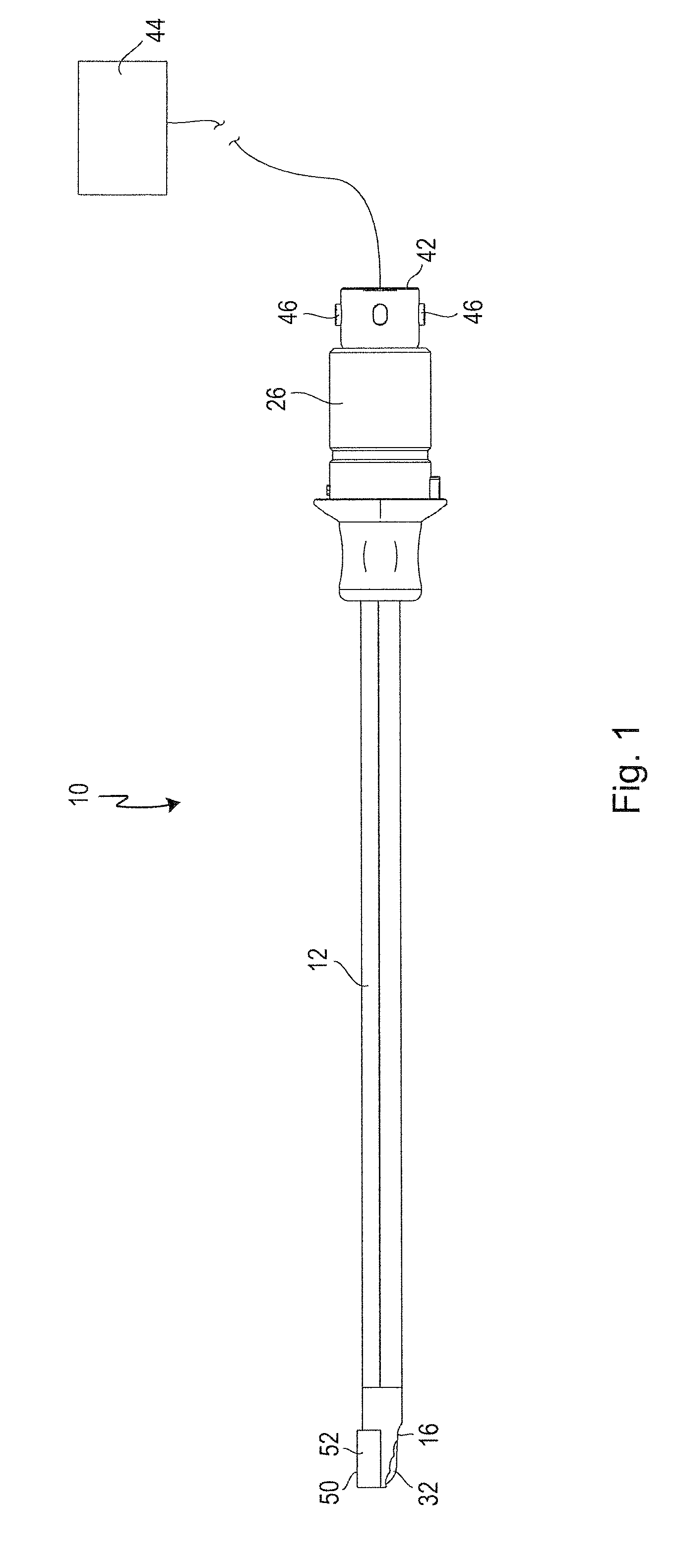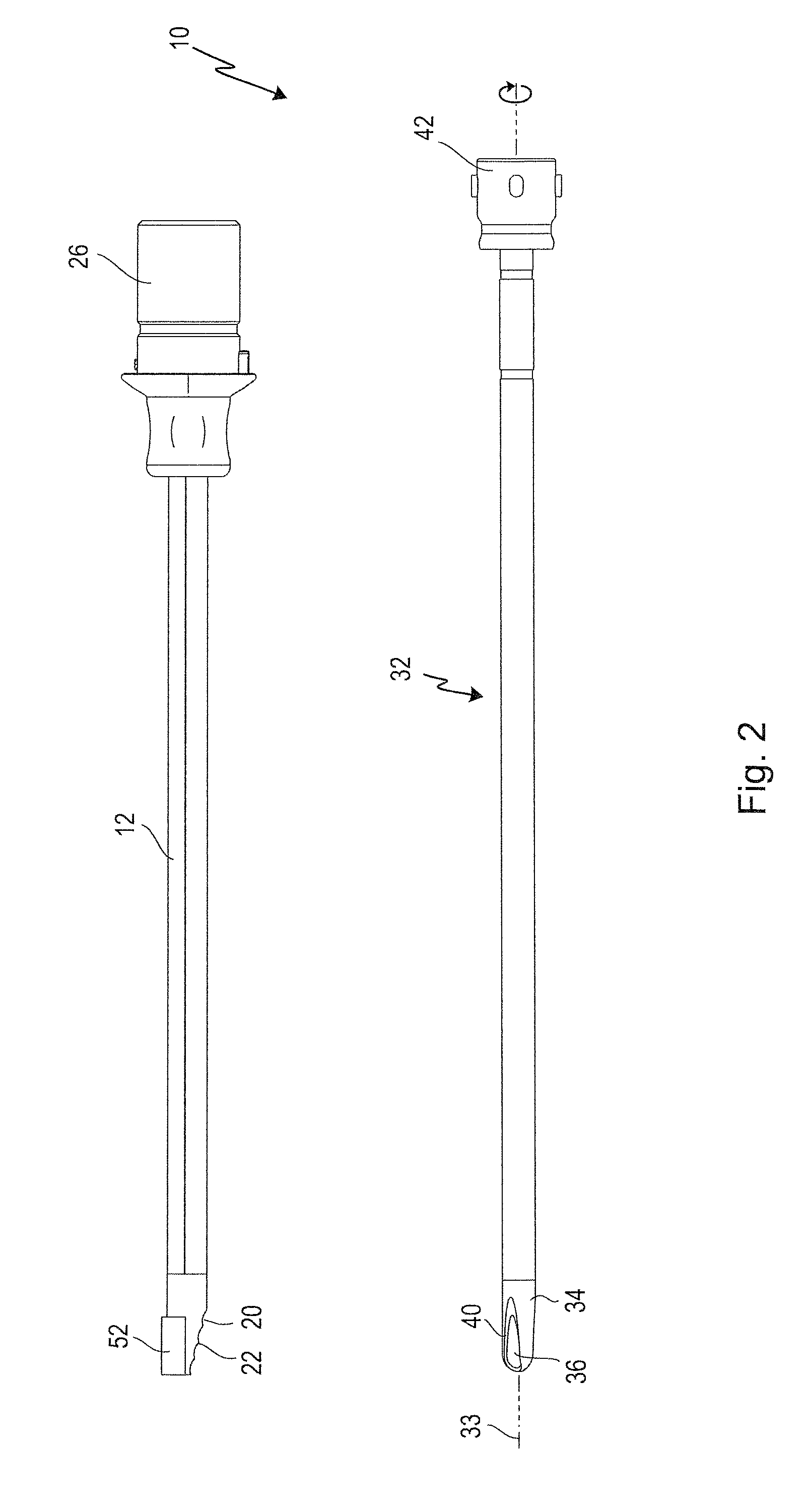Medical Instrument For Cutting Off Tissue And Cartilage From A Human Or Animal Body
a technology of medical instruments and cartilage, applied in the field of medical instruments, can solve the problems of difficult to avoid so-called debridement, large diameter, and inability to achieve the effect of easy sucking
- Summary
- Abstract
- Description
- Claims
- Application Information
AI Technical Summary
Benefits of technology
Problems solved by technology
Method used
Image
Examples
Embodiment Construction
[0055]A medical instrument according to the invention shown in FIGS. 1 to 7, and used for separating tissue and cartilage, is designated in its entirety by the reference number 10.
[0056]The instrument 10 has an elongate, rectilinear hollow outer shaft 12.
[0057]The latter has, in the area of its distal end 14, a first window 16, as can be seen particularly from FIG. 3.
[0058]The single first window 16 has a circumferential border 18, which is designed as a cutting edge 20.
[0059]Teeth 22 stand vertically from the cutting edge 20, as can be seen particularly from FIGS. 3, 4 and 5.
[0060]The circumferential border 18 lies in the area of an oblique cut 24, as is indicated in FIG. 4. This oblique cut 24 is inclined radially inwards, as seen from proximal to distal, such that the first window 16 has an approximately oval cross section. As can be seen from FIG. 4, the inclination of the oblique cut 24 is such that less than half a diameter is cut away at the distal apex.
[0061]The teeth 22 can...
PUM
 Login to View More
Login to View More Abstract
Description
Claims
Application Information
 Login to View More
Login to View More - R&D
- Intellectual Property
- Life Sciences
- Materials
- Tech Scout
- Unparalleled Data Quality
- Higher Quality Content
- 60% Fewer Hallucinations
Browse by: Latest US Patents, China's latest patents, Technical Efficacy Thesaurus, Application Domain, Technology Topic, Popular Technical Reports.
© 2025 PatSnap. All rights reserved.Legal|Privacy policy|Modern Slavery Act Transparency Statement|Sitemap|About US| Contact US: help@patsnap.com



